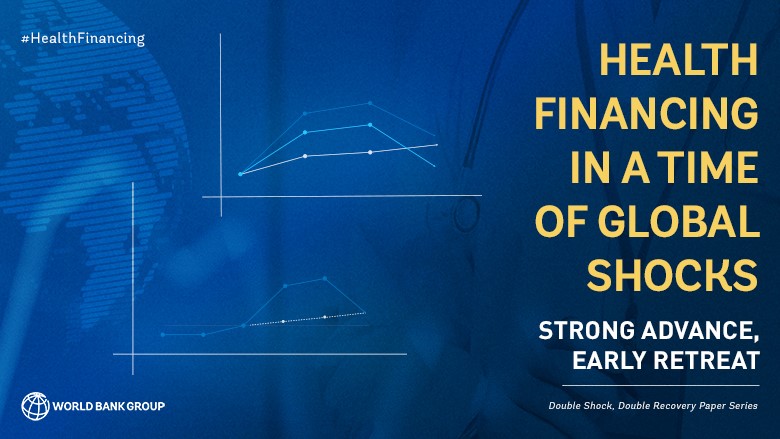Governments must take rapid action to prioritize health spending and put their countries and the world on a pandemic-resilient, sustainable development trajectory.

Governments must take rapid action to prioritize health spending and put their countries and the world on a pandemic-resilient, sustainable development trajectory.
“Strong Advance, Early Retreat” - June 2023
During the first two years of the COVID-19 pandemic, central government health expenditures soared in developing countries as governments began prioritizing health in their spending to combat the initial onset of the virus.
After the initial strong response to the pandemic, health spending is no longer a priority for many governments.
Rapid action of governments will be necessary to secure the prioritization of health spending and avoid further setbacks on the path toward the health-related SDGs.
"Old Scars, New Wounds" - September 2022
In the wake of the global economic shocks from the COVID-19 pandemic and the Russian invasion of Ukraine, rifts between countries in their capacity to spend on health will be growing.
In 41 countries, government spending until 2027 is projected to remain lower than before COVID-19, restricting their ability to invest in critical areas, including health.
In 69 countries, government spending is expected to exceed 2019 levels, but the increases will be weak.
And in only 67 countries, government spending is projected to increase steadily through 2027.
In many countries, rising interest payments on public debt further threaten their capacity to invest in health.
With debt levels at record highs and interest rates rising to control inflation, many governments will struggle to meet interest payments on public debt.
Interest payments will constrain the capacity of low-income countries to spend on health on average by 7% and in lower middle-income countries by 10 % in 2027.
The impact of interest payments varies vastly across these countries, in some of them, they are expected to constrain their health spending capacity between 15-30% in 2027.
Without immediate action, many low- and lower middle-income countries will be left behind on the path to health and economic recovery.
The projected decline of government spending in many low and lower-middle income countries will restrict their ability to strengthen pandemic preparedness and limit their progress towards universal health coverage.
This will lead to growing inequalities between countries, threatening global stability, and prosperity.
Governments need to increase revenues, give greater priority to health in budgets, and improve the efficiency and equity of health spending.
By increasing development aid and working towards comprehensive debt solutions for low- and lower middle-income countries, high-income countries can preempt emerging threats to peace and prosperity – securing a healthier, more secure future for all.
“From Double Shock to Double Recovery” is a discussion paper series that offers analyses of most recent trends and outlooks on government health spending in a time of successive global shocks. Papers of this series also explore health financing options that policymakers can pursue to put their countries on a new pandemic proof trajectory to attain the health SDGs.
The first outlook was published in March 2021 at the height of the COVID-19 crisis and included a comprehensive review of health financing options to maintain or increase health investments during macroeconomic downturns. A technical update, “Widening Rifts,” followed in September 2021, and a second update, “Old Scars, New Wounds,” in September 2022.
The June 2023 paper, “Strong Advance, Early Retreat,” provides a first, comprehensive analysis of government health spending trends in developing countries during the past three years of successive economic shocks (2019 to 2022).